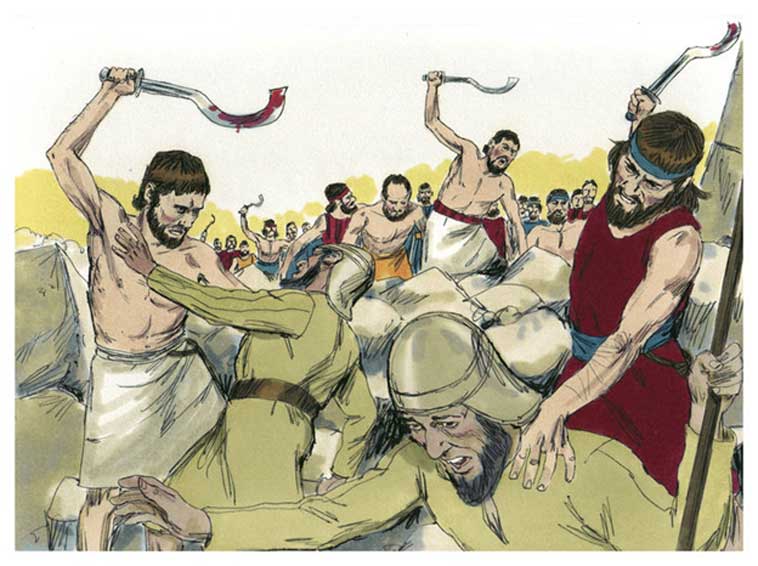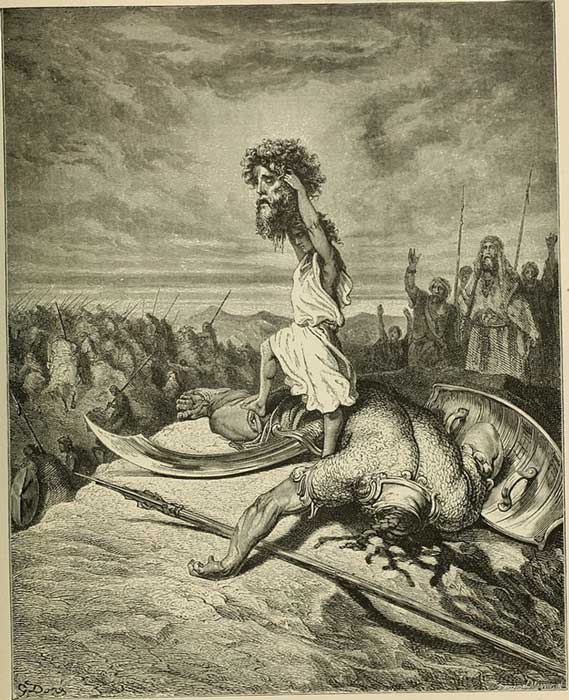
The Pros and Cons of the Armory of the Ancient Israelites
While the Israelites saw Yahweh in the spiritual sense as their divinely armed warrior leading the way, in the physical realm, they were anything but divinely armed. At Sinai, Moses instituted a draft in which the number swelled from 1,000 soldiers to 5,500 or 5,750. These 5,500 Israelites were trained and armed, most likely in Egyptian fashion. As time progressed the Israelites adopted new forms of strategy, tactics, arms, and armor due to the trial and error of battle.
All weapons serve a defensive and offensive purpose, depending on whether the warrior is repelling or attacking an opponent. One way to examine the Israelite weapons is from a perspective of short, medium, and long-range use.

Bronze, iron and ivory daggers found at Tel El-Farah (11th BC). Israel Museum, Jerusalem. (CC BY-SA 3.0)
The Khopesh vs the Sickle Sword
The sword the Israelites were familiar with, was the Egyptian bronze sword called a khopesh, or the ‘foreleg’ of an animal. The khopesh was an amalgamation of a sword and an axe. The shape of the blade is straight until it reaches the last half, where it sweeps out into a curved cutting edge. The entire sword from handle to blade was cast from one piece of bronze. The length was 500 to 650 millimeters, (19 - 25 inches) and the weight was 650 to 750 grams (1.4 - 1.6 pounds). The outside edge of the sword was sharpened, not the inside edge. The handle of the sword was likely made of wood, bone, or ivory. The design and function of the weapon allowed the soldier to hook his opponents arm; pull his shield out of the way; or hook a horse’s leg, causing the animal to throw its rider and exposing the rider to the lethal downward slash.

Bible Illustrations: The Sickle Sword (Distant Shores Media /CC BY-SA 3.0)
Another sword possibly utilized by the Hebrews was the Canaanite sickle-shaped scimitar. While the Canaanite sickle sword and the Egyptian khopesh look similar, there is a difference: the Canaanite sickle sword is sharp on the inner or concave edge, like a sickle.
A sword possibly similar to the Canaanite sickle-shaped scimitar was the one carried between the shoulders by Goliath. I Samuel 17:6 states: “And he had greaves of brass upon his legs, and a target of brass between his shoulders.” The word ‘target’ in Hebrew is kı̂don, which is translated to mean javelin or spear. The Qumran War Scroll describes a kı̂don as a sword. Goliath comes at David: “with a sword, and with a spear, and with a shield.” Once David kills Goliath, he severs Goliath’s head with his own sword. A spear or javelin is not slung across a soldier’s back, so the weapon slung across Goliath’s back was a sword, but what kind? II Samuel 21:18, states: “sons of the giant.” In Hebrew, the term ‘giant’ is hrph, which may refer to the Greek word harpe, a type of scimitar. Samuel’s use of the expression: “Sons of the hrph” was perhaps to indicate not only the type of sword used by the Philistines, but also points to their Aegean origin.





